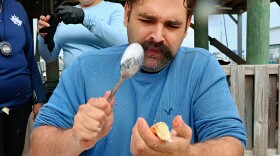Over the past few months, there's been a lot of coverage of the paucity of Latino depictions on American movie and television screens, particularly given that Latino audiences are disproportionately driving box-office ticket revenues. The Wrap recently completed a four-part series on the subject.
If you want to see Latinos on-screen, the place to go might not be TV or the box office, but YouTube, , Netflix and other online outlets.
We've been watching MiTú — a YouTube network geared toward Latinos — continue to grow since it was created in 2012. Just this year, Forbes reported that the network, which distributes lifestyle videos in both Spanish and English, had surpassed 6 billion views. In June, the company announced that its Series B funding round had netted $10 million. And now, Variety reports, MiTú is partnering with Televisa, a Spanish-language media company, to create and distribute its content.
MiTú has been concerted in its effort: More Latinos are watching videos online. And as the country's demographics change, it's a given that there will be more thirst for media geared toward Latinos. (MiTú is aiming to reach a younger group, viewers age 13 to 34.) MiTú isn't shy about acknowledging that. According to its site, the network "takes YouTube beyond its Anglophone base."
Its collection of videos includes DIY shows and segments that focus on cooking, fashion and tech. (If you're a fan of MiTú, you're probably familiar with the cooking show Guzii Style, or with She Looks Like, a fashion/beauty series that analyzes celebrity style.)
But the network's founders, Beatriz Acevedo and Doug Greiff, have always had ambitious plans for MiTú: In 2012, Acevedo and Greiff told NPR's Laura Sydell that they really believed MiTú could expand — a lot.
"We've had a successful production company for many, many years," Greiff told Sydell, "but we both genuinely believe with all our heart and soul that MiTú could be 20 times bigger than whatever we've accomplished on the TV production side of it."
Copyright 2021 NPR. To see more, visit https://www.npr.org. 9(MDAyMTYyMTU5MDEyOTc4NzE4ODNmYWEwYQ004))








